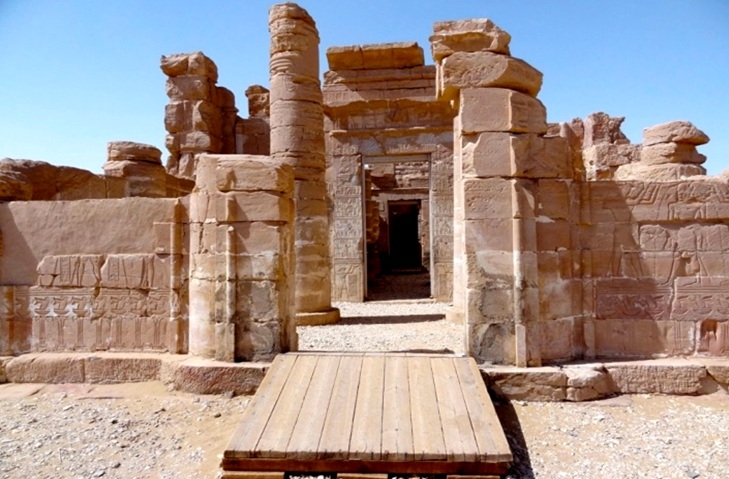
The Temple of Deir El Hagar can be translated as Monastery of stone temple, it is located south Dakhla Oasis, about 10 kilometers away Al Qasr the capital of Bahariya Oasis, it dates back to 54 A.D. Its ancient name was Setweh or Place of Coming Home.
The Temple was built during the reign of King Nero to encourage farmers to settle in the area. Nero’s successor Vespasian (AD 69-79) added decoration to the sanctuary, Titus (AD 79-81) added the porch and finally Domitian (AD 81-96) decorated some of the doorways and the monumental gateway. Other Roman rulers made small contributions to the decorations, with the latest inscriptions dating to the 3rd century AD.
The Temple of Deir el-Hagar represents one of the most complete Roman monuments in Dakhla Oasis. The temple was mainly dedicated to the Theban triad, consisting of Amun-Re, Mut and Khonsu, though Seth, who was the principle god of the Oasis, was also honored here. Here, Seth is depicted with a falcon head and a blue anthropomorphic body.
The temple building measures 7.3m by 16.2m and has a well-preserved outer mudbrick enclosure wall where some remains of painted plaster can still be seen. The main gateway is in the eastern side of the enclosure wall, while another gateway to the south. The temenos wall of the sanctuary depicts many Greek inscriptions and graffiti written by early travelers who wanted to record their visits to this sacred place.
The entrance to the temple is through a screen wall into the wide pronaos or porch, which has two columns. The sanctuary itself was decorated with a magnificent astronomical ceiling, dating to the rule of Hadrian (AD 117-138). The west wall at the rear of the sanctuary gives prominence to the primary gods of the temple, Amun-Re and Mut, while the south wall portrays the Theban Triad of Amun-Re, Mut and Khons, as well as Seth, Nephthys, Re-Horakhty, Osiris and Isis, and Min-Re. Also on the northern wall there is an important representation of the Dakhla god, Amun-Nakht, and an inscription in the sanctuary records his earliest known visit to the oasis.
